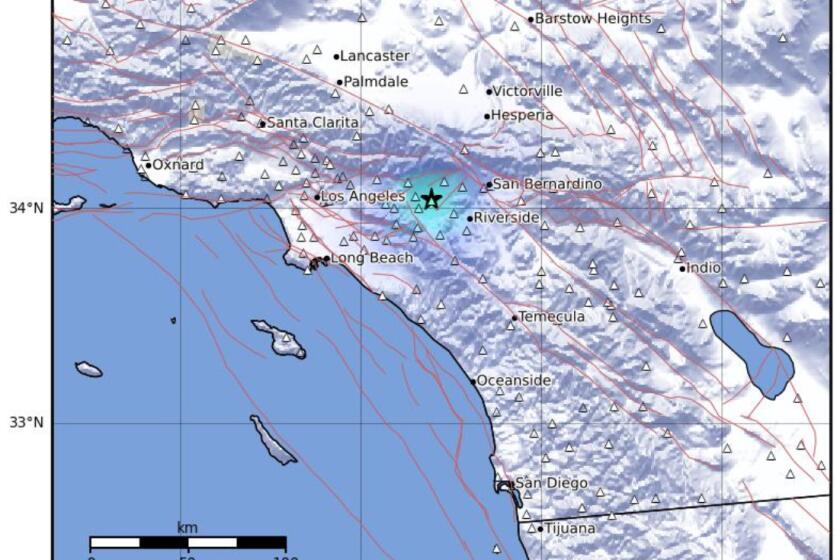What If the Big One Hits Caltech?
When an earthquake hits, people turn to Caltech to answer the basic questions: How big was it? Where was the epicenter? How many aftershocks?
But with the Sierra Madre Earthquake slamming into Pasadena on Friday, another question arises: What if The Big One hits Caltech?
First of all, every building on the scientific institute’s campus is reinforced to 1 1/2 times earthquake construction standards, said Bill Irwin, assistant director of the Caltech physical plant. Second, the school has auxiliary generators if the institute should lose power--provided they aren’t destroyed.
Caltech has about 250 monitoring stations in Southern California. “We can operate with a fraction of what we normally have and still provide some information,” said Kate Hutton, a Caltech seismologist. “Probably our building would not collapse. The only thing that would keep us out would be if there was a toxic leak, and hopefully they would get that cleaned up quickly.”
Even if Caltech did go down, the seismology laboratory at USC could take over many of Caltech’s tasks, said USC geologist John McRaney.
USC has about 20 recording stations throughout the Los Angeles basin and on islands that could provide immediate readings--if the quake didn’t knock out USC’s power and phone lines, McRaney said. And the U.S. Geological Survey in Menlo Park in Northern California could get readings, as could the National Earthquake Information Center in Denver. Both those institutes have stations that pick up earthquake readings from Southern California.
More to Read
Sign up for Essential California
The most important California stories and recommendations in your inbox every morning.
You may occasionally receive promotional content from the Los Angeles Times.










